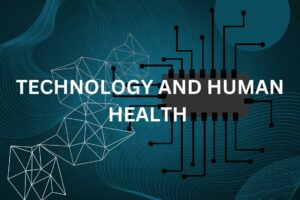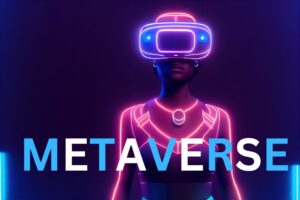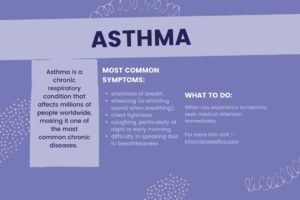
Table of Contents
“Exploring the Future of Communication with ChatGPT: Opportunities and Challenges”
ChatGPT: A Powerful Tool for the Future of Communication
In recent years, artificial intelligence has advanced by leaps and bounds, and one of the most exciting developments in the field has been the creation of powerful language models like ChatGPT. These models are trained on vast amounts of text data and can generate human-like responses to a wide range of queries, making them a valuable tool for everything from customer service to creative writing. In this blog, we’ll explore the history and capabilities of ChatGPT, as well as its potential for the future of communication.
History of ChatGPT
ChatGPT is based on the GPT (Generative Pre-trained Transformer) architecture, which was first introduced by OpenAI in 2018. The GPT model uses a neural network to analyze vast amounts of text data and learn patterns in language, enabling it to generate realistic and coherent sentences. Since its release, the GPT model has been continually improved, with later versions incorporating larger datasets and more advanced training techniques.
In June 2020, OpenAI released the third version of the GPT model, known as GPT-3. This version was trained on a massive dataset of over 45 terabytes of text data, including everything from books and articles to social media posts and web pages. GPT-3 is one of the largest and most powerful language models ever created, with 175 billion parameters, allowing it to generate highly accurate and sophisticated responses to a wide range of queries.
ChatGPT is a specific implementation of the GPT-3 model designed for conversational applications. It has been fine-tuned on a variety of dialogue datasets, allowing it to generate human-like responses to a wide range of prompts and questions.
Capabilities of ChatGPT
One of the most impressive things about ChatGPT is its ability to generate coherent and human-like responses to a wide range of queries. It can answer questions on a vast array of topics, including science, history, literature, and more. Additionally, it can generate creative responses to prompts, such as writing a short story or composing a poem.
ChatGPT is also highly flexible and adaptable, making it a valuable tool for a variety of applications. For example, it can be used for customer service chatbots, providing customers with quick and accurate responses to their queries. It can also be used for language translation, allowing users to communicate with people who speak different languages. Additionally, it can be used for content creation, generating articles or blog posts on a wide range of topics.
The Future of ChatGPT
As language models like ChatGPT continue to advance, their potential applications will only continue to expand. Here are some of the ways ChatGPT could be used in the future:
- Education
ChatGPT could be used as a virtual tutor, providing personalized assistance to students on a wide range of subjects. It could also be used to generate educational content, such as textbooks or study guides.
- Healthcare
ChatGPT could be used to provide medical advice and assistance to patients, answering questions about symptoms and treatment options. It could also be used to generate patient information materials, such as brochures and handouts.
- Journalism
ChatGPT could be used to generate news articles and reports, allowing news organizations to produce content more quickly and efficiently. It could also be used to fact-check articles and ensure their accuracy.
- Personal Assistance
ChatGPT could be used as a personal assistant, helping users manage their schedules, make reservations, and perform other tasks. It could also be used to provide recommendations for products and services based on a user’s preferences and history.
- Creative Writing
ChatGPT could be used to generate creative writing, such as novels, short stories, and screenplays. It could be used as a tool for writers to generate ideas or overcome writer’s block. It could also be used to create content for video games or other interactive media.
- Social Media
ChatGPT could be used to generate social media content, such as tweets or Facebook posts, based on a user’s interests and preferences. It could also be used to monitor social media for trends and provide insights into user behavior.
- Business
ChatGPT could be used for a variety of business applications, such as sales and marketing. It could be used to generate product descriptions, create advertising copy, and provide customer service support.
- Accessibility
ChatGPT could be used to improve accessibility for people with disabilities. For example, it could be used to provide text-to-speech or speech-to-text capabilities for people with hearing or vision impairments.
Challenges and Limitations
While ChatGPT has enormous potential, there are also some challenges and limitations to consider. One of the main challenges is ensuring that the responses generated by ChatGPT are accurate and unbiased. Language models are trained on large datasets of text, and if those datasets contain biases or inaccuracies, those biases and inaccuracies can be reflected in the responses generated by the model.
Another challenge is ensuring that ChatGPT is used ethically and responsibly. Language models can be used to generate fake news or propaganda, and there is a risk that they could be used to spread misinformation or disinformation.
Finally, there is a risk that ChatGPT and other language models could be used to replace human workers in certain industries, such as customer service or content creation. While this could lead to increased efficiency and cost savings, it could also lead to job losses and economic disruption.
Conclusion
ChatGPT is a powerful tool for the future of communication, with a wide range of potential applications in fields such as education, healthcare, journalism, and business. As language models like ChatGPT continue to advance, they will become even more versatile and flexible, opening up new opportunities for innovation and creativity. ASR Search Engine
However, it is important to use ChatGPT and other language models ethically and responsibly, ensuring that they are used to benefit society as a whole rather than just a few select individuals or organizations. By doing so, we can harness the power of AI to create a better and more connected world for everyone.






